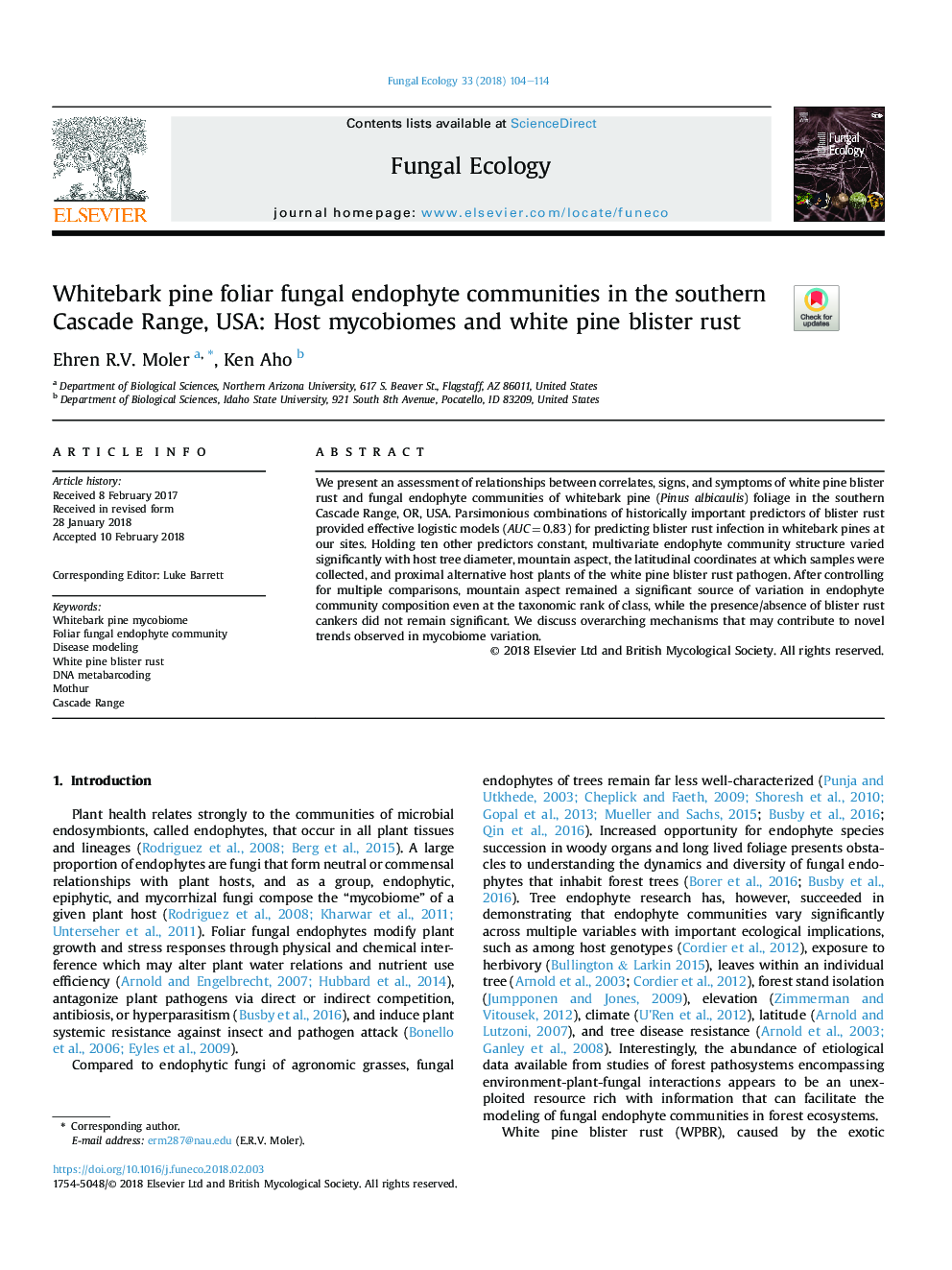| Article ID | Journal | Published Year | Pages | File Type |
|---|---|---|---|---|
| 8384229 | Fungal Ecology | 2018 | 11 Pages |
Abstract
We present an assessment of relationships between correlates, signs, and symptoms of white pine blister rust and fungal endophyte communities of whitebark pine (Pinus albicaulis) foliage in the southern Cascade Range, OR, USA. Parsimonious combinations of historically important predictors of blister rust provided effective logistic models (AUCâ¯=â¯0.83) for predicting blister rust infection in whitebark pines at our sites. Holding ten other predictors constant, multivariate endophyte community structure varied significantly with host tree diameter, mountain aspect, the latitudinal coordinates at which samples were collected, and proximal alternative host plants of the white pine blister rust pathogen. After controlling for multiple comparisons, mountain aspect remained a significant source of variation in endophyte community composition even at the taxonomic rank of class, while the presence/absence of blister rust cankers did not remain significant. We discuss overarching mechanisms that may contribute to novel trends observed in mycobiome variation.
Related Topics
Life Sciences
Agricultural and Biological Sciences
Ecology, Evolution, Behavior and Systematics
Authors
Ehren R.V. Moler, Ken Aho,
